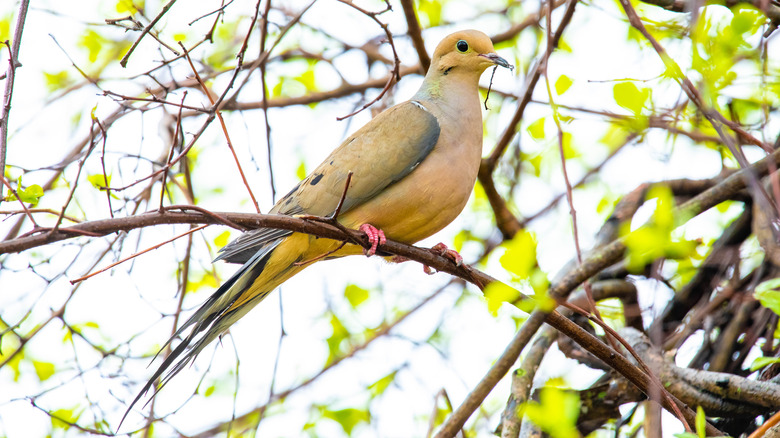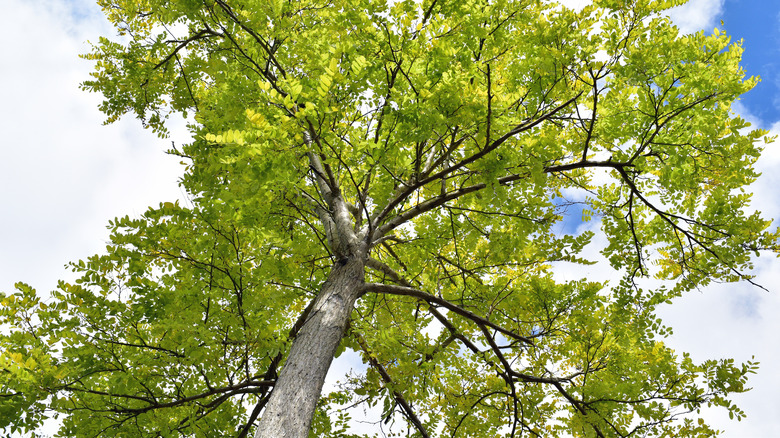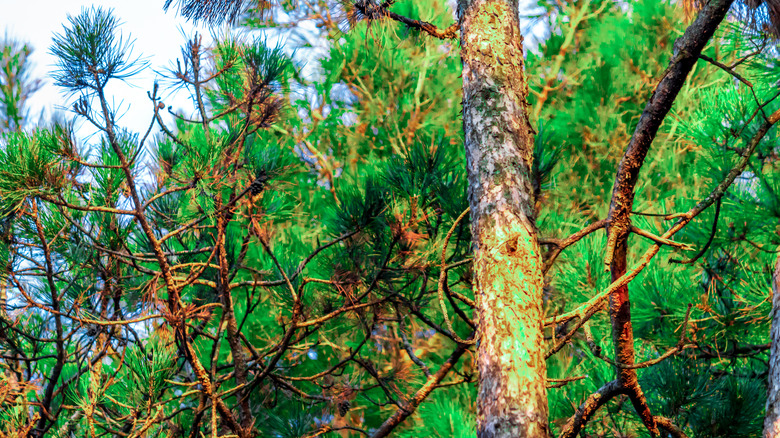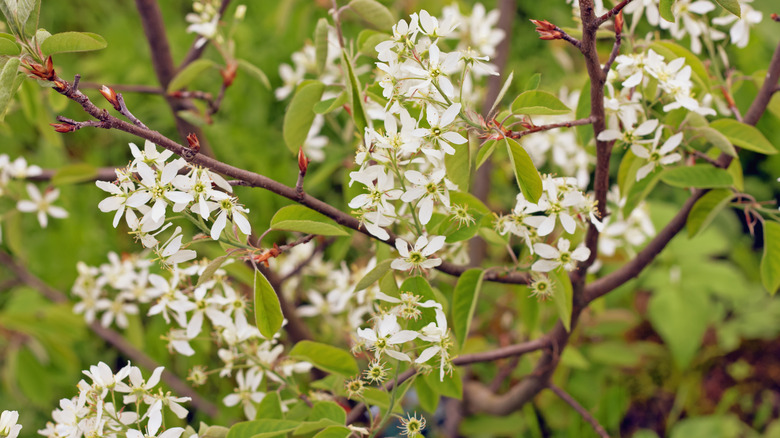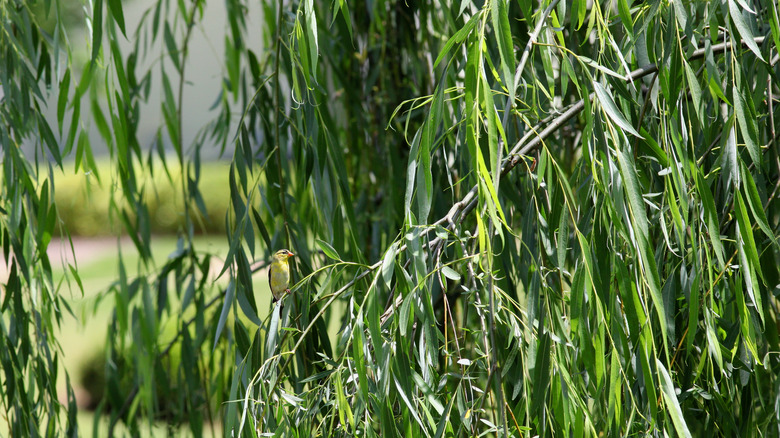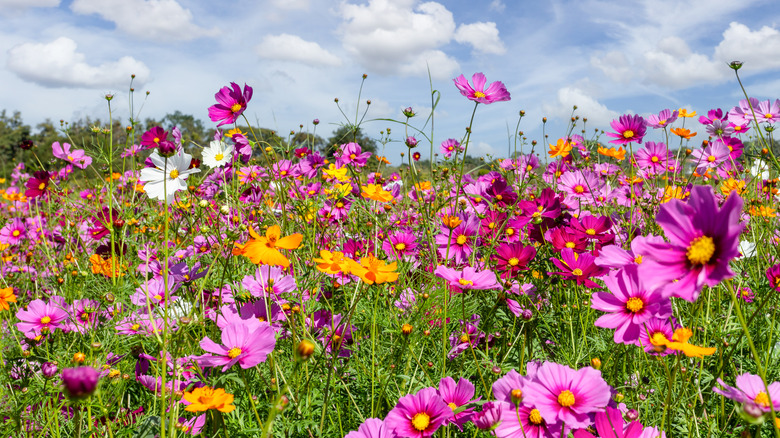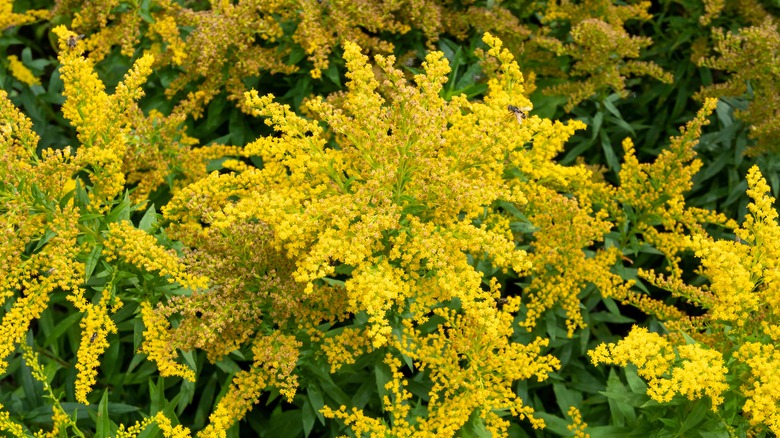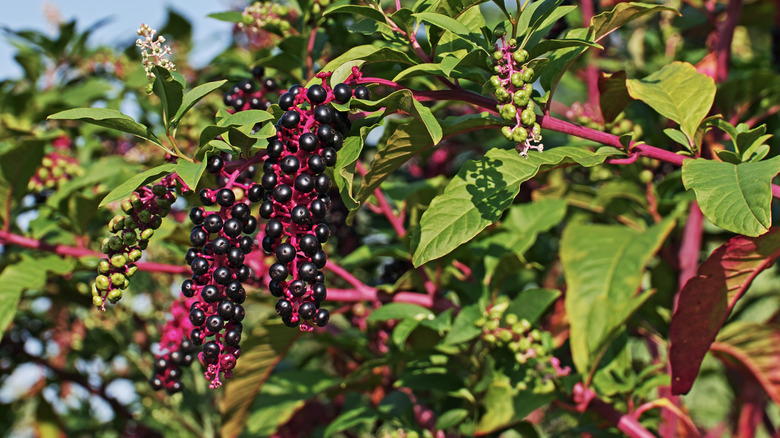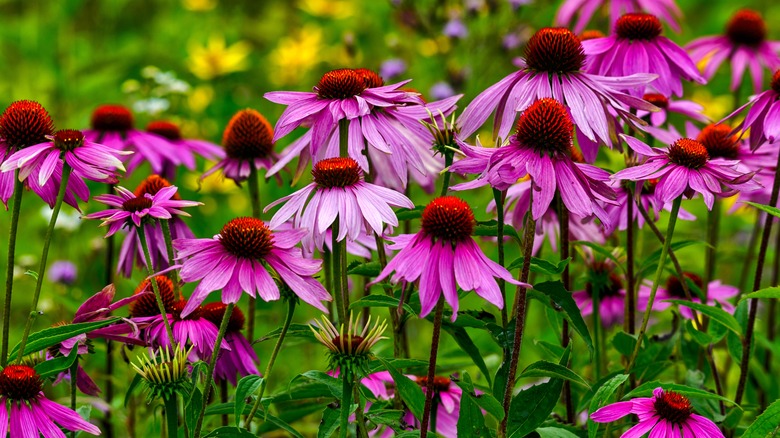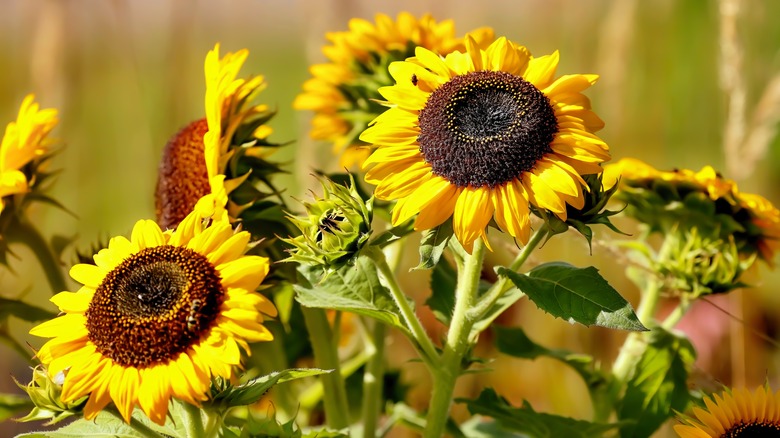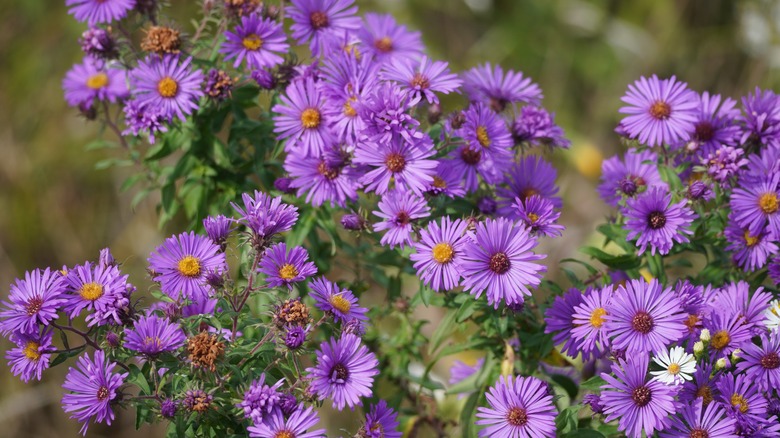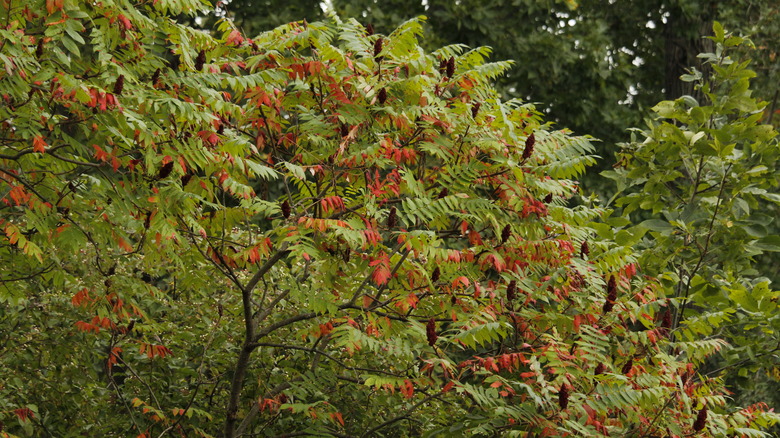11 Plants That Are Most Likely To Bring Mourning Doves To Your Yard
Scientifically known as the Zenaida macroura, mourning doves are one of the most populous bird species in North America. They forage on the ground for seeds, nest in trees, and soar through open woodlands. With an estimated 350 million Mourning doves, your path may cross with their black-spotted wings. But why not tempt fate?
You can use a bird feeder filled with its favorite breakfast, like millet, hulled sunflower, and cracked corn, to attract Mourning Doves to your yard. However, planting a colorful, biodiverse garden that invites these flyers is the best of both worlds. Different trees, shrubs, flowers, and vines create comfy perches and shelters that call mourning doves to your home. The plant's berries and seeds are nature's bird feeder. Regardless of whether you're a beginner gardener or have certified green thumbs, there are a variety of plants you can grow that'll have you waking up to the soft coos of these taupe doves.
1. Ash tree
The ash tree (Fraxinus spp.) is native to the mourning dove's habitat. It provides a shaded place to perch after feasting on sunflower seeds and millet. White, black, and green ash trees are popular varieties to grow. This drought-tolerant deciduous plant is best grown in USDA hardiness zones 2 to 9. It needs full sun and moist soil to thrive. An ash tree can average up to 60 feet tall. You want to plant the tree away from any structural pipelines and buildings, so the roots have enough space to spread.
2. Eastern white pine
Eastern white pine (Pinus strobus) provides shelter and food with its broad canopy and pine cones. It is practically a bird mansion. This evergreen is fast-growing and can reach its peak at 150 feet. It likes full sun with at least four hours of direct sunlight and partial shade. Moist soil is best, however, eastern white pine can tolerate dry, rocky soils. Watch out for its common enemies — air pollution, road salt, and soil compaction. Hardiness zones 3 to 8 will see this evergreen thrive and the mourning doves it brings along.
3. Serviceberry
Mourning doves are a fan of the serviceberry's (Amelanchier spp) sweet fruit. Planting this deciduous tree is a great way to attract these birdies and supply lunch. Native to North America, the serviceberry is easy to grow and recommended for USDA zones 2 to 4. It blooms in early spring and bears fruit all summer. Moist and well-drained soil is the way to go with this plant. Full sun will help the tree produce more berries. However, it will also survive in partial shade. Your serviceberry may also attract other hungry birds like the cedar waxwing and gray catbird.
4. Black willow
Mourning doves mainly use the black willow tree (Salix nigra) for nesting. The catkin flower cluster this wetland tree produces in the spring makes the perfect material for building nests. This tree can grow upward of 60 feet with a canopy matching its height. Hardiness zones 2 to 8 are best for black willows. This tree prefers cooler climates. However, it still needs full sun for healthy growth. Moist to wet soil is a must for this willow. Now is the time for overwaters to shine.
5. Cosmos
Cosmos (Cosmos bipinnatus) are beautiful flowers that bring pops of color and butterflies to your garden. Mourning doves enjoy the seeds of this annual. All you need is full sun and well-drained soil for a patch of bird-attracting cosmos to flourish. These flowers are heat-resistant, drought-tolerant, and low-maintenance — the perfect combination for beginner gardeners. They reach up to 6 feet tall and 3 feet wide. These annuals are suitable in USDA hardiness zones 2 to 11.
6. Goldenrod
Goldenrod (Solidago spp.) is a popular bird magnet. It's this plant's seeds that keep the mourning dove coming back. Their yellow blossom clusters, which span up to 5 feet, attract a lot of butterflies and insects. Plus, they are easy to grow. These perennials are deer-resistant and drought-tolerant. They can endure poor soils and don't suffer from many diseases or pests. Your goldenrod needs full sunlight and well-drained soil. Growing zones 3 to 9 are where most of the Solidago species fall within.
7. Pokeweed
Like the serviceberry, pokeweed's (Phytolacca americana) fruit makes it a target for mourning doves. This perennial produces dark purple berries a month after its white petals appear. Pokeweed is not biased as to where it grows, but it does best in USDA zones 4 to 8. It is a low-maintenance plant. Full sun or partial shade and well-drained soil will do. However, pokeweed does tend to take over your garden with its growth. Although the mourning doves enjoy the berries, they are poisonous to humans.
8. Purple coneflower
Another flowering plant that lures the mourning dove's coos is the purple coneflower (Echinacea purpurea). Like many greenery, it grows with full sun to partial shade in well-drained soil. Zones 3 to 9 are where the violet blooms flourish. There are also pink, white, yellow, and red varieties. The plant is heat and drought-resistant. See the flowers shoot up to 5 feet tall and 2 feet wide. Its seed heads attract your favorite dove, plus other birds you will want in your yard, like American goldfinches and downy woodpeckers.
9. Sunflower
Sunflower seeds (Helianthus spp.) make this plant a hot spot for birds, including the mourning dove. We enjoy the giant crown of yellow petals, and they relish in the grain. Its name makes it no surprise that the sunflower likes sunlight. It needs at least 6 hours of direct sunshine each day. The tall plant prefers well-drained, nutrient-rich soil. It thrives in hardiness zones 2 to 11. Both annual and perennial species attract birds, but you'll have to wait until its petals shed and the seeds come in.
10. New England aster
The New England aster (Symphyotrichum novae-angliae) is another easy plant to grow. Watch your perennial return yearly when you give it full sun and rich, well-drained soil. It can tolerate partial shade and clay-like soil. USDA zones 4 to 8 are preferable for this plant. This aster can grow to 6 feet tall and 3 feet wide. It is also a suitable companion species for the coneflower and goldenrod — the more dove-attracting flowers, the more mourning doves.
11. Fragrant sumac
This next garden must-have is pleasing to the eye and nose. The fragrant sumac (Rhus trilobata) is a deciduous shrub native to the mourning dove's routine. You'll find red berries within the branches and a lemon scent from the crushed leaves. Grow your fragrant sumac in hardiness zones 3 to 9. This shrub likes full sun to partial shade and moist soil. However, it can also survive in dry, rocky soil. Plus, the dove magnet is drought and erosion-tolerant.
